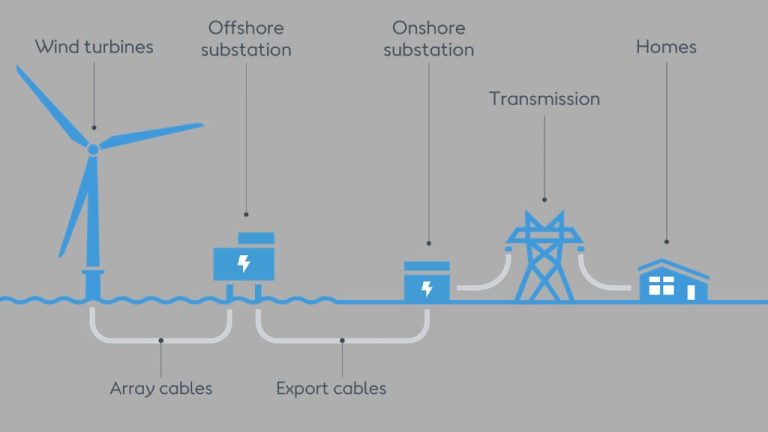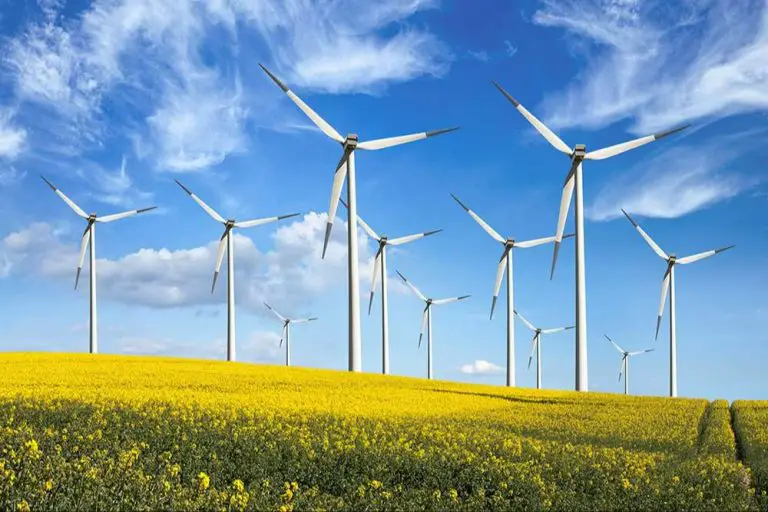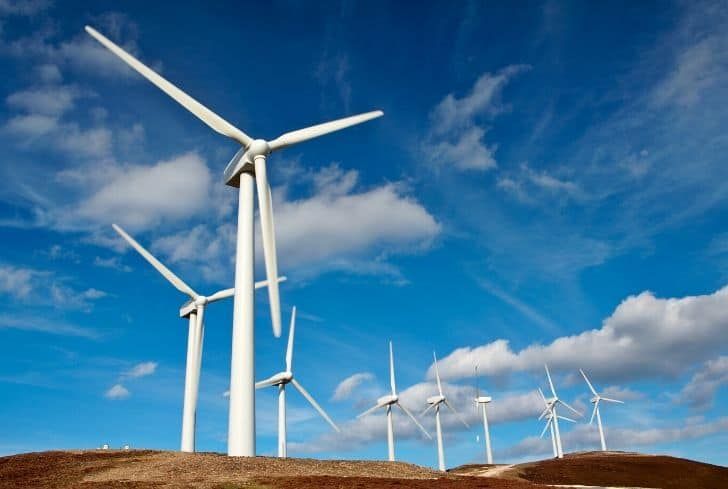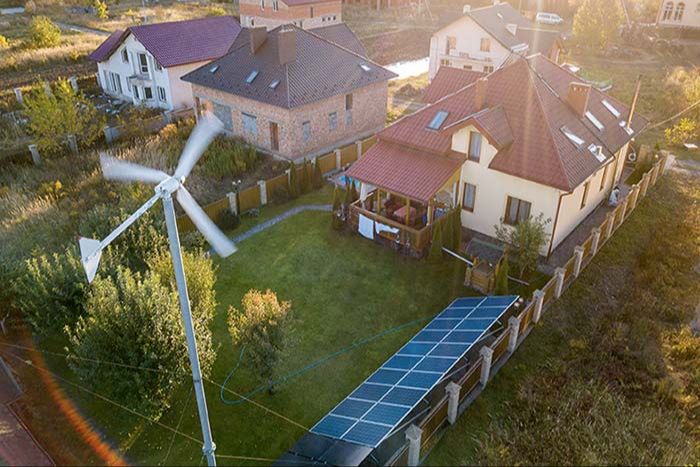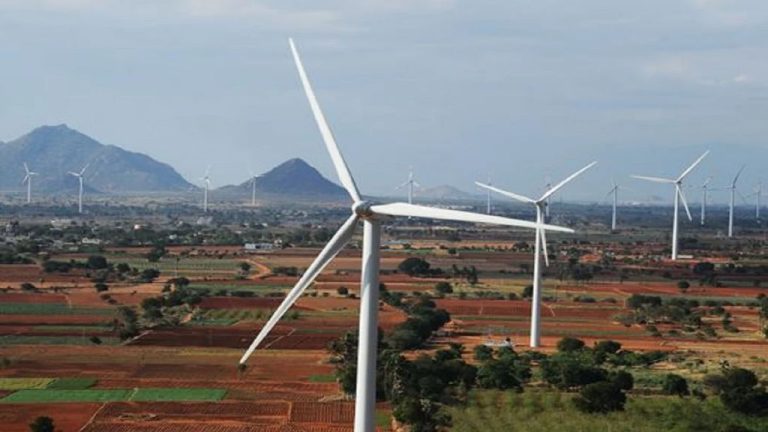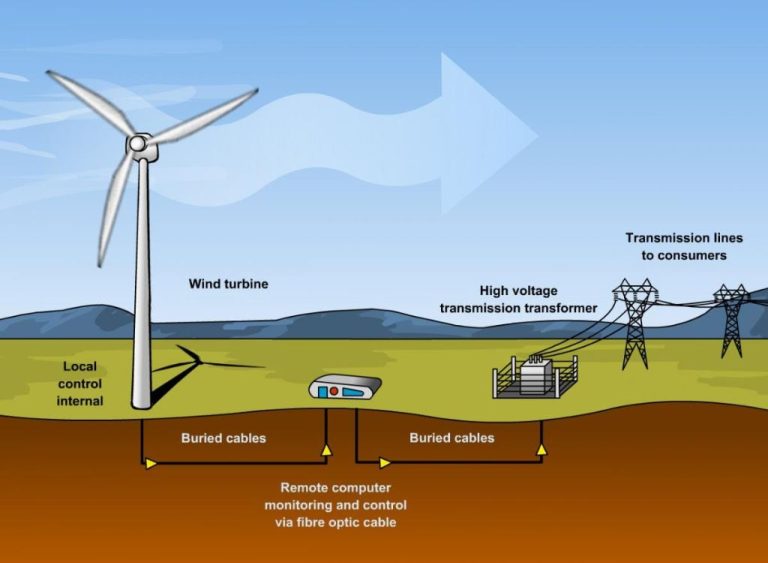Does Wind Need Backup Or Storage?
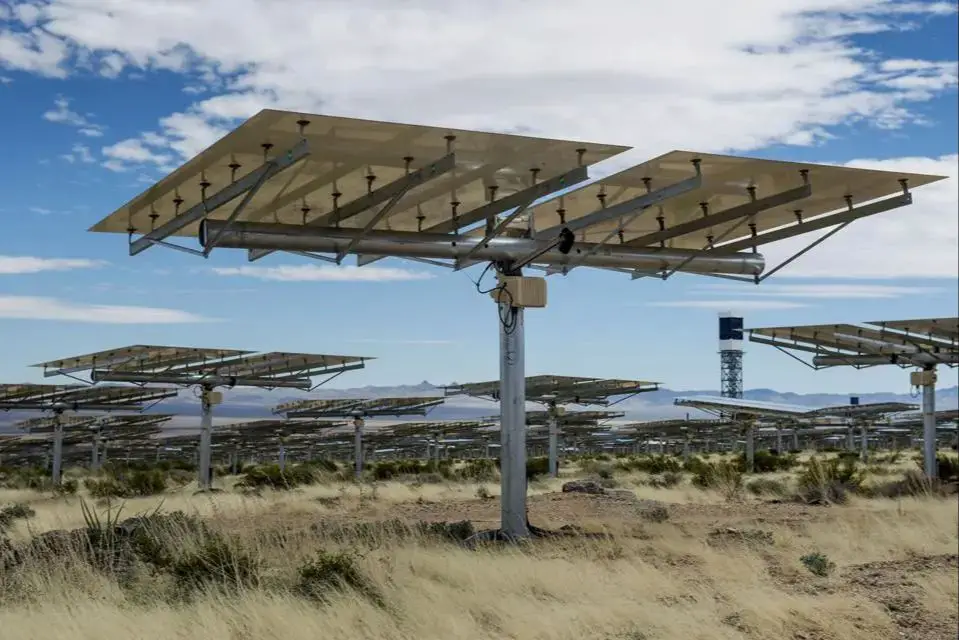
With wind energy production growing rapidly around the world, there are often questions around the intermittency of wind and how much it needs backup generation and energy storage. While wind speeds can fluctuate, leading to power output variations, there are many techniques grid operators use to integrate wind effectively without needing excessive amounts of costly backup or storage. This article will examine how wind forecasting, geographic diversity, flexible generation, transmission, and other solutions enable wind to be a reliable energy source without always needing dedicated backups or batteries.
Wind Energy Basics
Wind turbines convert the kinetic energy in wind into mechanical power that can be used to generate electricity. The amount of energy that can be generated depends on the turbine’s size and the wind’s speed through the rotor. The most common modern wind turbines have a horizontal axis with two or three blades that face into the wind.
Wind turbines have a rotor with blades that spin when the wind blows past them. The rotor connects to a drive shaft that turns a generator to produce electricity. The nacelle sits atop the tower and contains the gear box, low- and high-speed shafts, generator, controller, and brake. Some turbines use a design with the rotor upwind of the tower while others have it downwind. In general, turbines with the rotor facing upwind are more common (National Grid, 2023).
The blades are made of composites that are lightweight and aerodynamic. Their aerodynamic shape helps capture the most energy from the wind. The turbine will start producing some electricity at wind speeds around 7-9 mph, generate maximum power at around 30 mph, and shut down around 55 mph to avoid damage at high wind speeds (Department of Energy, 2023).
Intermittency Explained
Intermittency refers to the variability and unpredictability of renewable energy sources like wind and solar power. It occurs because the availability of the energy source fluctuates based on weather conditions and time of day [1]. For example, wind speeds can change suddenly, causing wind turbine output to ramp up or down quickly. Solar power relies on sunny weather and is only generated during daylight hours.
This variability introduces challenges for integrating intermittent renewables like wind and solar into the electric grid. Conventional power plants can be scheduled to meet predictable demand. But the output from intermittent renewables is much harder to accurately forecast [2]. Grid operators have to balance supply and demand instantaneously. So backups are needed to fill the gap when renewable resources are unavailable.
Grid Integration
Connecting wind power to the grid poses some challenges, as wind is an intermittent resource that cannot be precisely controlled. However, grid operators have implemented methods to integrate large amounts of wind into the system while maintaining reliability.
Wind forecasts allow grid operators to schedule the most economical sources of generation like natural gas and hydropower to accommodate changing wind patterns. According to the U.S. Department of Energy, studies by utilities with experience using wind power have found that the costs of integrating wind into the grid are very small. After initial investments for transmission and grid upgrades, additional wind can be integrated for about $5 per megawatt-hour or less. For context, the overall costs of generating wind power typically range from $32 to $62 per megawatt-hour (in 2011 dollars).
Wind power plants can contribute to grid reliability and stability when they are spread over large geographic regions that experience diverse wind patterns. The variability and uncertainty of wind decreases significantly across bigger areas, making the aggregate wind generation more consistent and predictable. This allows the power system to rely on wind power more like conventional generators. Wind can also act fast enough to provide frequency regulation and other ancillary services to support grid reliability (U.S. Department of Energy).
Geographic Diversity
Wind patterns vary significantly by location. This geographic diversity of wind power production helps smooth the overall output across wider regions. Studies have shown that aggregating wind power output over large geographic areas, such as across a country or continent, can help reduce variability. According to research by the National Renewable Energy Lab (NREL), “the wind output from sites across the U.S. have low correlations” (Value of Geographic Diversity of Wind and Solar).
Other analyses indicate geographic dispersion of wind farms can decrease variability by over 30% compared to a concentrated area (Dampening Variations in Wind Power Generation Through Geographical Dispersion). The U.S. Department of Energy found “the lack of correlation between rapid changes in the output of different wind turbines reduces the variability of the aggregated wind output” when spread over distances of hundreds of miles (Implications of Geographic Diversity for Short-Term Variability of Wind Power).
Forecasting
Accurately forecasting wind speeds is critical for integrating variable wind power onto the grid. Advancements in wind power forecasting enable grid operators to anticipate fluctuations in wind generation and schedule the appropriate amount of reserve capacity.
According to a 2021 review, the prediction error for modern wind power forecasting techniques is about 10–15% of the root mean square error (RMSE) for an entire wind farm (Source). This level of accuracy allows grid operators to confidently integrate large amounts of wind energy.
Research shows that improving the accuracy of day-ahead wind forecasts reduces the need for operating reserves. One 2011 NREL study found that reducing wind forecast errors by one-third could save $20 million annually in reserve costs for a system with 10 gigawatts of wind capacity (Source).
Key ways to enhance wind forecasting accuracy include using advanced statistical models, machine learning techniques, and on-site wind measurement equipment. With continued improvements in prediction tools, wind power can be integrated onto the grid even more effectively.
Flexible Backup
When wind and solar generation fluctuate, grid operators rely on flexible backup power sources to quickly ramp up or down to meet demand. Natural gas plants are often used to provide this backup due to their fast ramp rates and ability to start up quickly (1). Gas plants can adjust their output rapidly to offset changes in renewable generation.
Existing hydroelectric facilities also provide excellent backup for renewables. Hydropower can instantly increase or decrease output to balance supply and demand. Pumped storage hydropower can act like a battery, using excess energy to pump water uphill and later releasing it to generate power when needed (2). This makes hydropower an ideal renewable partner to mitigate wind and solar intermittency.
Flexible natural gas and hydro resources help maintain reliability as the renewable share of electricity generation expands. Their ability to quickly change output enables them to fill in generation gaps when the wind isn’t blowing or sun isn’t shining.
Energy Storage
Energy storage provides a solution to the intermittency of renewable energy sources like wind and solar by allowing excess electricity to be stored and discharged when needed. Two major forms of energy storage used with renewable energy are batteries and pumped hydro storage (National Grid).
Batteries like lithium-ion are increasingly being used to store renewable energy. Battery storage systems can store electricity generated when the wind is blowing or sun is shining and discharge it when renewable generation is lower. Utility-scale lithium-ion battery storage capacity grew rapidly in recent years as costs declined (ACP).
Pumped hydro storage accounts for around 95% of energy storage capacity globally (The New Yorker). It works by using excess electricity to pump water uphill to a reservoir. When electricity is needed, the water is released to flow downhill through turbines to generate hydroelectricity. Pumped hydro provides large-scale, long-duration energy storage.
Transmission
Expanding transmission capabilities is crucial for integrating more renewable energy onto the grid. As the U.S. Department of Energy notes, “Expanding transmission also helps integrate renewable energy sources—such as wind and solar—which are increasingly cost-competitive with fossil fuels and are more geographically constrained than conventional generation technologies.”
With wind and solar farms often located in remote areas, new or upgraded transmission lines are needed to transport the electricity they generate to load centers. The U.S. Department of the Interior has emphasized the importance of “modernizing and expanding the electric transmission grid” for unlocking renewable energy potential on public, private and state lands across the country.
Major transmission projects are underway to relieve congestion and connect renewable energy hubs to population centers. However, more investment is still needed in transmission infrastructure to support the ongoing transition to renewable energy. Streamlining permitting and siting processes can help accelerate the deployment of key transmission projects.
Conclusion
Intermittency does not necessarily imply unreliability. While wind power can have variability in output, as discussed in this article, backup and storage is often not essential. Through geographic diversity, forecasting, grid integration, and flexible generation, wind energy can be reliably incorporated into the electric grid without excessive storage needs. The power system already has existing infrastructure for load balancing that can be leveraged for variable renewables. Though backup and storage can complement wind, and continued innovation in these areas is beneficial, the common perception that massive storage is an absolute necessity for higher wind penetrations is misleading. With the proper grid planning and operations, as well as technological advances, wind power can scale up reliably.

